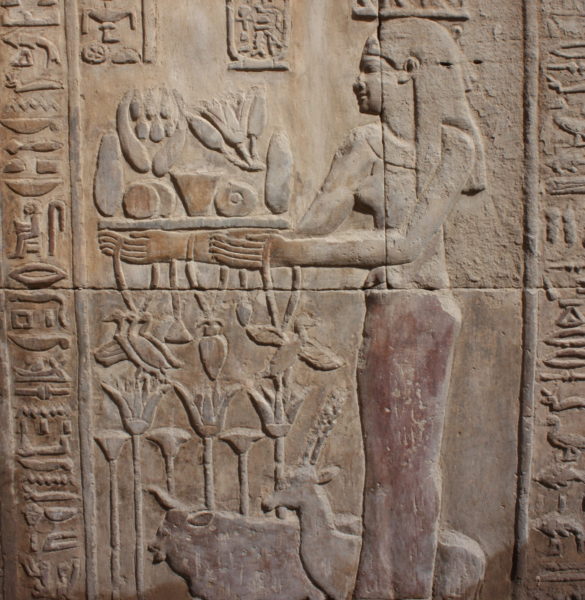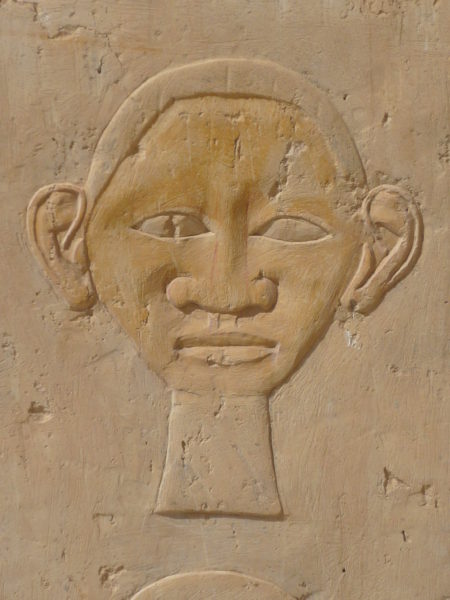mdw ntchr
Or hieroglyphs as the writing of ancient Kemet is now better known. In fact the translation of the two words means the same thing: sacred writing or script. The Kemite script was versatile in that it can be read from right to left, vice versa, or from top to bottom. Many signs are in profile, but out of all of the signs, the one that I am asked the most about is the frontal face (above).

The face sign
If you look at the column on the left side of the photograph above, you can see a version of the sign towards the bottom of the relief, with a line underneath it. When the face appears with the line, it spells the preposition ‘upon’, which is why it is so common on reliefs. It can be used in the writing of ‘upper’.

It’s sound is ‘hr’, which is the Kemite word for face, as confirmed by its similarity to the much later Coptic version of the word. The sound value can appear in other words too.
The example above is from the funerary temple of Hatshepsut, and so dates to what we now call the 18th Dynasty. If you look carefully you can see how much the original pigment has faded; there are traces of the original and darker colour on each side of the nose.
In Gardiner’s sign list this sign is listed as D2, a part of the human body.

